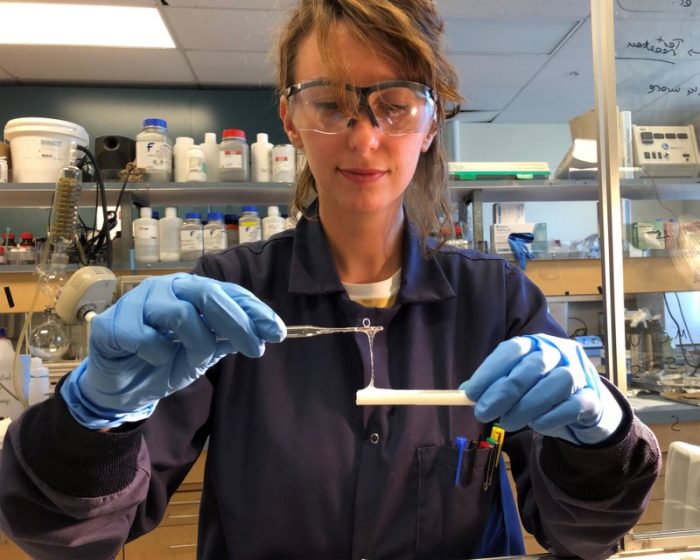
Perovskite solar cells (PSCs), compared to conventional silicon solar cells, are lighter weight, more flexible and potentially cheaper to produce. But commercialization is still in question because PSCs lack long-term stability.
The problem is rooted in the volatile nature of organic components contained within perovskites which are triggered when exposed to environmental stimuli, like light and heat. This volatility leads to a series of undesirable results which can severely limit the efficiency, stability, and performance of PSCs.
We’ve reported on several breakthroughs the last few years that indicate we’re getting closer to the PSC era. The team at XlynX Materials – a specialty chemicals company based in Victoria, BC – is the latest to say they’ve found a solution to overcoming this challenge.
A new study, released in the sustainable energy research journal Joule, demonstrates how PSCs, treated with BondLynx (a molecular crosslinker designed and manufactured by XlynX Materials), can achieve remarkable efficiency and stability, even after 1,000 hours of continuous exposure to environmental stimuli.
“It’s great to see these results published in Joule,” remarked Sean Bourquin, Director of Strategy for XlynX Materials. “But mostly we’re looking forward to engaging with companies operating in the perovskite field, as this could have a huge impact on the future of this technology.”
The reason BondLynx is effective is because it forms chemical covalent bonds with the organic components in PSCs to strongly immobilize them, thereby reducing the losses of efficiency, stability, and performance typically seen in PSCs. With no significant reduction in performance over the course of the study, the stability improvements realized by BondLynx are expected to extend far beyond the 1,000 hour mark.

The results:
Illumination Stability: When exposed to sunlight, untreated PSCs will lose 35% of their efficiency after just 200 hours of continuous operations. In comparison, BondLynx-treated PSCs show remarkable stability, retaining nearly 99% of their initial efficiency, even after 1,000 hours of continuous illumination.
Thermal Stability: When exposed to constant heat (60°C), untreated PSCs demonstrate poor thermal stability, losing 27% efficiency after 600 hours of continuous operation. In comparison, BondLynx-treated PSCs maintain nearly 98% efficiency under the same conditions.
The work of this peer-reviewed study also suggests that, in addition to enabling highly efficient and ultra-stable PSCs, there are potential benefits to be realized in other perovskite-based optoelectronic applications.
“It’s fascinating to witness the impact of BondLynx in the field of perovskite solar cells, considering that its original design didn’t anticipate such a role for this molecular linker,” XlynX Senior Research Scientist and study collaborator Dr. Stefania Musolino commented. “There’s no doubt that many more innovative applications will arise in the years to come.”
— Solar Builder magazine
[source: https://solarbuildermag.com/news/study-shows-bondlynx-stabilizes-perovskite-solar-cells/]

Leave a Reply
You must be logged in to post a comment.